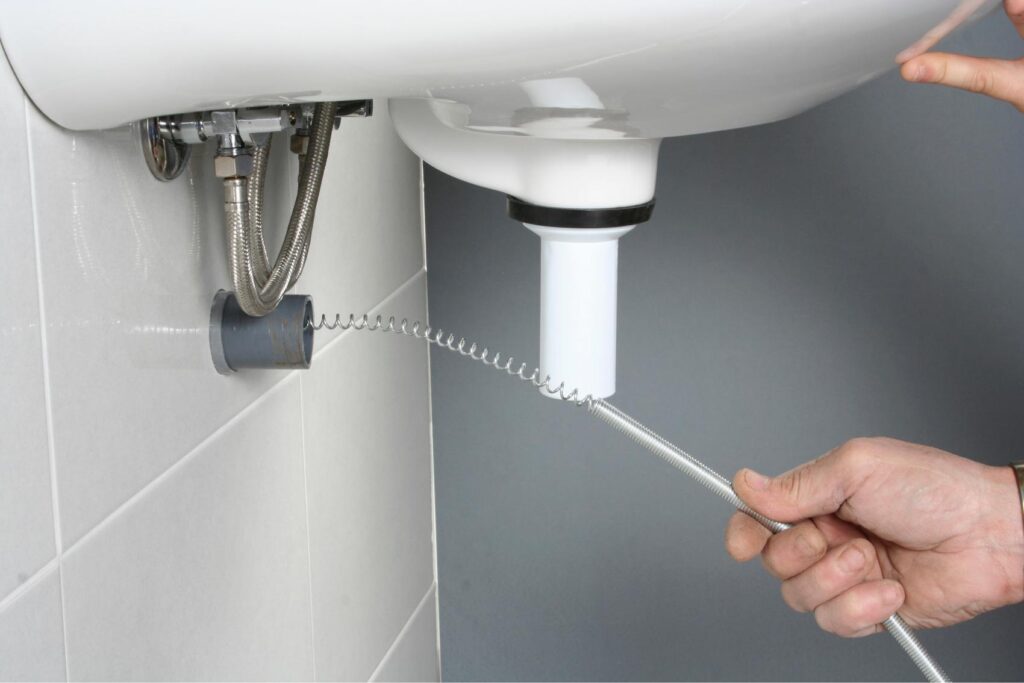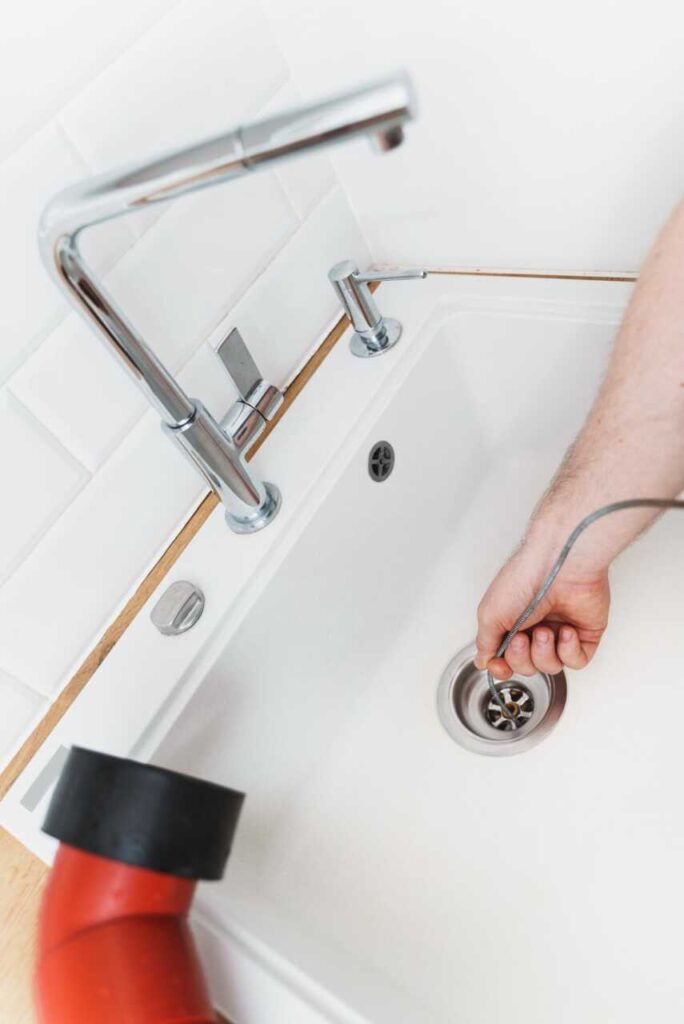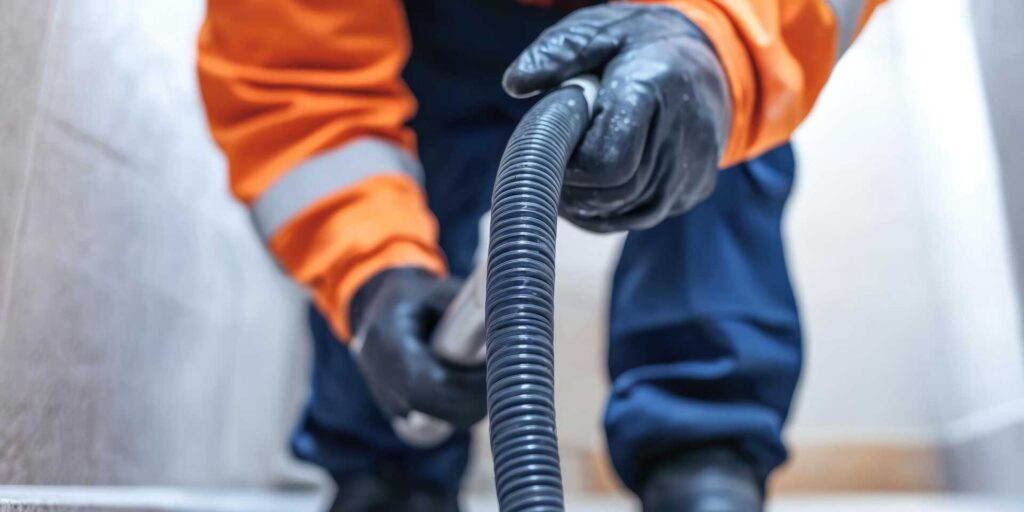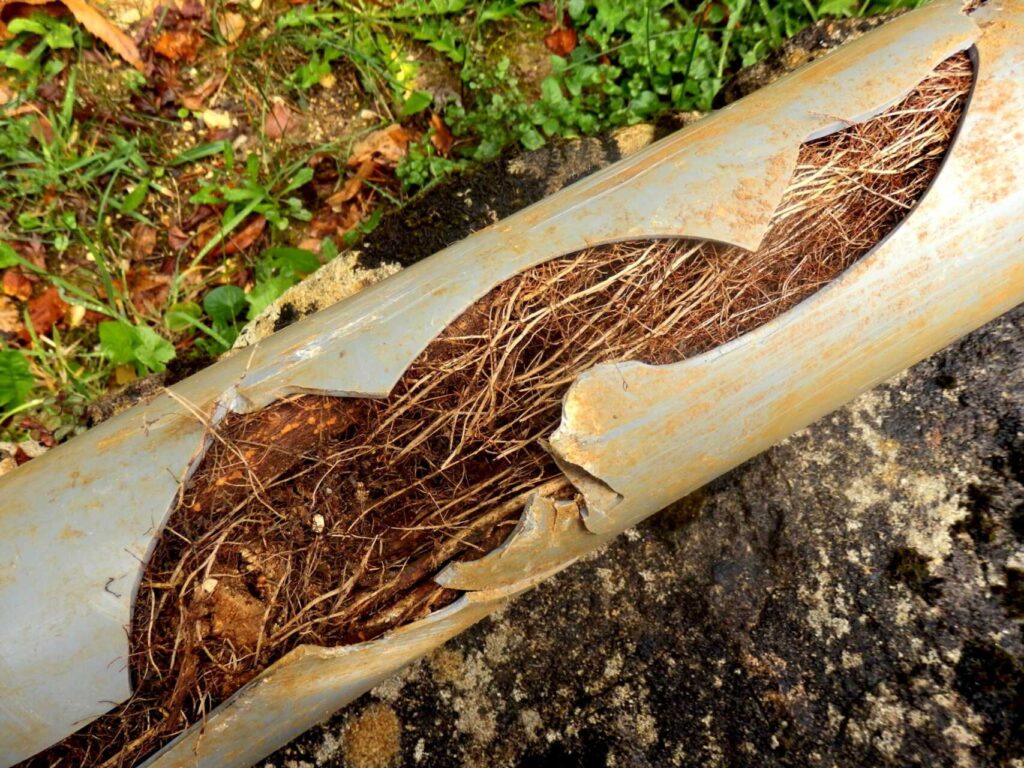
Contents
When it comes to maintaining your home’s plumbing, knowing your options for affordable drain cleaning can save you both time and money. You might think DIY methods are the only solution, but there are professional services out there that offer cost-effective alternatives. Understanding the balance between self-service and expert help is essential, especially if you want to avoid costly repairs down the line. So, what should you consider before making a decision that could impact your home’s value?
Key Takeaways
- Explore DIY drain cleaning techniques like baking soda and vinegar to save on costs and maintain your system effectively.
- Compare local service providers for transparent pricing and customer reviews to find affordable options that meet your needs.
- Consider preventative maintenance plans to reduce long-term plumbing expenses and avoid costly emergency repairs.
- Regularly inspect and clean mesh strainers to prevent clogs, enhancing drainage efficiency without incurring professional service fees.
- Utilize natural remedies and homemade solutions as cost-effective alternatives to commercial products while promoting environmental responsibility.
Understanding Drain Cleaning Options
When you face a clogged drain, understanding your options can make all the difference. You need to know the various drain cleaning methods available so you can choose the best one for your situation. The methods range from simple DIY techniques to more advanced solutions.
One common method is using a plunger. This tool can create pressure to dislodge blockages, making it a quick fix for minor clogs. If that doesn’t work, you might consider a drain snake. This flexible tool can reach deep into pipes to remove stubborn debris.
For those who prefer eco-friendly solutions, several options exist. Baking soda and vinegar can effectively break down organic matter when combined. Pouring boiling water down the drain can also help dissolve grease and soap buildup without harming the environment.
If clogs persist, you might explore enzymatic cleaners. These products use natural enzymes to digest organic waste, making them a safe alternative to harsh chemicals. Always check labels to verify your chosen product aligns with your eco-friendly goals.
Lastly, if you’re unsure or uncomfortable with DIY methods, don’t hesitate to reach out to a professional for advice. Understanding these drain cleaning methods helps you make informed decisions, ensuring your home stays functional and welcoming. By choosing methods that align with your values, you foster a sense of belonging in your home and community.
Benefits of Professional Services
While DIY methods can be effective for minor clogs, there are significant advantages to hiring professional drain cleaning services. By opting for experts, you gain access to specialized knowledge and advanced equipment that can tackle more severe issues. Here’s a look at some key benefits:
| Benefits | Expert Insights | Service Advantages |
|---|---|---|
| Thorough Inspection | Professionals can identify hidden problems that may cause future clogs. | Preventative measures save you money in the long run. |
| Advanced Techniques | Trained technicians use high-tech tools like hydro-jetting for effective cleaning. | Ensures deeper cleaning than standard methods. |
| Time Efficiency | Experts can complete the job quickly, allowing you to focus on your day. | Reduces downtime and inconvenience for your household. |
| Safety and Compliance | Professionals are knowledgeable about local codes and safety standards. | Reduces risks associated with improper cleaning methods. |
Investing in professional drain cleaning services means you’re not just paying for a quick fix; you’re investing in long-term peace of mind. With expert insights, you’ll understand your plumbing system better, and the service advantages will enhance your home’s drainage efficiency. So, next time you face a stubborn clog, consider the value that professional help brings to the table. You deserve a hassle-free solution that keeps your home functioning smoothly.
DIY Drain Cleaning Techniques
Clogged drains can be a nuisance, but you don’t always need to call in the pros to tackle minor issues. With a few simple DIY drain cleaning techniques, you can resolve many problems yourself. These homemade solutions often use natural remedies that are both effective and safe for your plumbing.
Here are some techniques you can try:
- Baking Soda and Vinegar: This classic combination creates a fizzy reaction that can help break down clogs.
- Boiling Water: Pouring boiling water down your drain can dissolve grease and soap buildup.
- Salt and Baking Soda: Mixing these two can create a powerful abrasive that helps scrub away grime.
- Plunger: A simple yet effective tool, a plunger can often dislodge stubborn blockages.
Before you start, make sure to gather your supplies. For many homeowners, using these natural remedies can foster a sense of pride and accomplishment. Not only do you save money, but you also connect with your home in a meaningful way.
Cost Factors for Homeowners
Understanding the cost factors associated with drain cleaning is essential for homeowners looking to manage their budgets effectively. Various elements contribute to the overall expense, and having a clear cost breakdown can help you make informed decisions.
First, consider the type of blockage. Simple clogs often require less intensive methods, while more complex issues might necessitate specialized equipment or techniques. This can greatly affect the pricing. Additionally, the location of the blockage plays a role; if it’s in a hard-to-reach place, accessing it might increase labor costs.
Another important factor is the service provider’s pricing transparency. A reputable company should provide a detailed estimate before beginning any work. This estimate should outline labor costs, materials, and any potential additional fees. Knowing what you’re paying for ensures you won’t face unexpected charges.
The frequency of service also impacts costs. If you’ve had recurring issues, you might benefit from a maintenance plan that can lower your overall expenses. Regular inspections can prevent major problems and allow for proactive solutions.
Lastly, labor costs can vary based on your geographical area and the company’s experience. It’s beneficial to compare quotes from multiple providers, confirming you’re getting a fair deal without sacrificing quality.
Choosing the Right Service
How can you ensure you’re selecting the right drain-cleaning service? Choosing the right provider is essential for ensuring your home stays comfortable and functional. To make an informed decision, focus on key factors like service reputation and customer reviews. A reputable service often reflects reliability and quality work.
Consider these points when selecting your drain cleaning service:
- Trustworthiness: You want a team that respects your home and time.
- Expertise: Skilled professionals can quickly diagnose and resolve issues.
- Satisfaction: A company with positive customer reviews is likely to deliver good results.
- Transparency: Clear pricing and service descriptions build trust and confidence.
Start by researching local companies. Look for those with a solid service reputation—check their websites and online profiles. Read customer reviews to gauge their performance. Pay attention to recurring themes; consistent praise or complaints can provide insight into their reliability.
Don’t hesitate to ask for references or testimonials from previous clients. This step can help you feel more connected to the service, knowing others in your community have had positive experiences.
Finally, get estimates from multiple providers. This allows you to compare prices and the level of service offered. By prioritizing reputation and customer feedback, you’ll find a drain cleaning service that aligns with your needs, ensuring peace of mind and a cleaner home.
Common Clog Causes
Drainage issues often stem from a variety of common culprits that can disrupt your home’s plumbing system. Understanding these causes is essential for every homeowner looking to maintain a smooth-running household. Two of the most prevalent reasons for clogs are food scraps and hair buildup.
When it comes to food scraps, even small particles can lead to significant problems. Whether it’s leftover bits from your meals or grease that solidifies in your pipes, these substances can accumulate and create blockages over time. It’s vital to dispose of food waste properly, as even a little can lead to a major clog if it finds its way down your sink.
Hair buildup is another notorious clog culprit, particularly in bathrooms. Each shower or bath sheds hair, which can easily gather in your drain. Over time, this hair can intertwine with soap scum and other debris, forming a dense mass that restricts water flow. Regularly cleaning your drain covers and using hair catchers can help minimize this issue.
Preventative Maintenance Tips
To keep your drains in top condition, establish a regular inspection schedule. Implementing effective DIY cleaning techniques can also prevent clogs before they start. Staying proactive saves you time and money on costly repairs down the line.
Regular Inspection Schedule
While you may not think about your drains often, establishing a regular inspection schedule is crucial for maintaining their health and preventing costly blockages. By determining an appropriate inspection frequency, you can catch potential issues before they escalate. Aim for seasonal checks, ideally at the start of each season, to ensure your drainage system is functioning efficiently year-round.
Regular inspections can help you:
- Avoid frustrating backups that disrupt your daily routine
- Save money by preventing costly repairs down the line
- Ensure peace of mind knowing your home’s plumbing is in good shape
- Enhance your home’s value by maintaining its overall infrastructure
During these inspections, pay attention to any unusual odors, slow drainage, or gurgling sounds. These could indicate underlying problems that need to be addressed promptly. A proactive approach safeguards your home and fosters a sense of community as you share best practices with fellow homeowners. Remember, a little effort now can go a long way in preserving your drains and maintaining a happy home environment. Keep those drains flowing smoothly, and you’ll thank yourself later!
DIY Cleaning Techniques
After establishing a regular inspection schedule, incorporating DIY cleaning techniques can further enhance your drains’ performance. You don’t need to rely solely on commercial products; natural cleaners and homemade solutions can effectively keep your drains clear and functioning smoothly.
One effective method involves using a simple mixture of baking soda and vinegar. Pour half a cup of baking soda down the drain, followed by half a cup of vinegar. Allow it to fizz for about 30 minutes, then rinse with hot water. This not only helps break down minor clogs but also neutralizes odors.
Another option is to use salt and boiling water. Pour a generous amount of salt down the drain, followed by boiling water. The salt can help break up grease and debris while the hot water flushes it away.
Additionally, consider using a mesh strainer to catch hair and food particles. Regularly cleaning this strainer prevents buildup that can lead to clogs. By adopting these DIY cleaning techniques, you’ll save money and foster a sense of community responsibility in maintaining a healthy home environment.
Final Thoughts
In your quest for a healthy plumbing system, remember that affordable drain cleaning is within reach. Picture a sparkling kitchen sink, free of clogs, where water flows effortlessly like a mountain stream. By embracing DIY techniques and knowing when to call in professionals, you can maintain your home’s plumbing without draining your wallet. Stay proactive with regular maintenance, and you’ll safeguard your property’s value while enjoying peace of mind for years.



